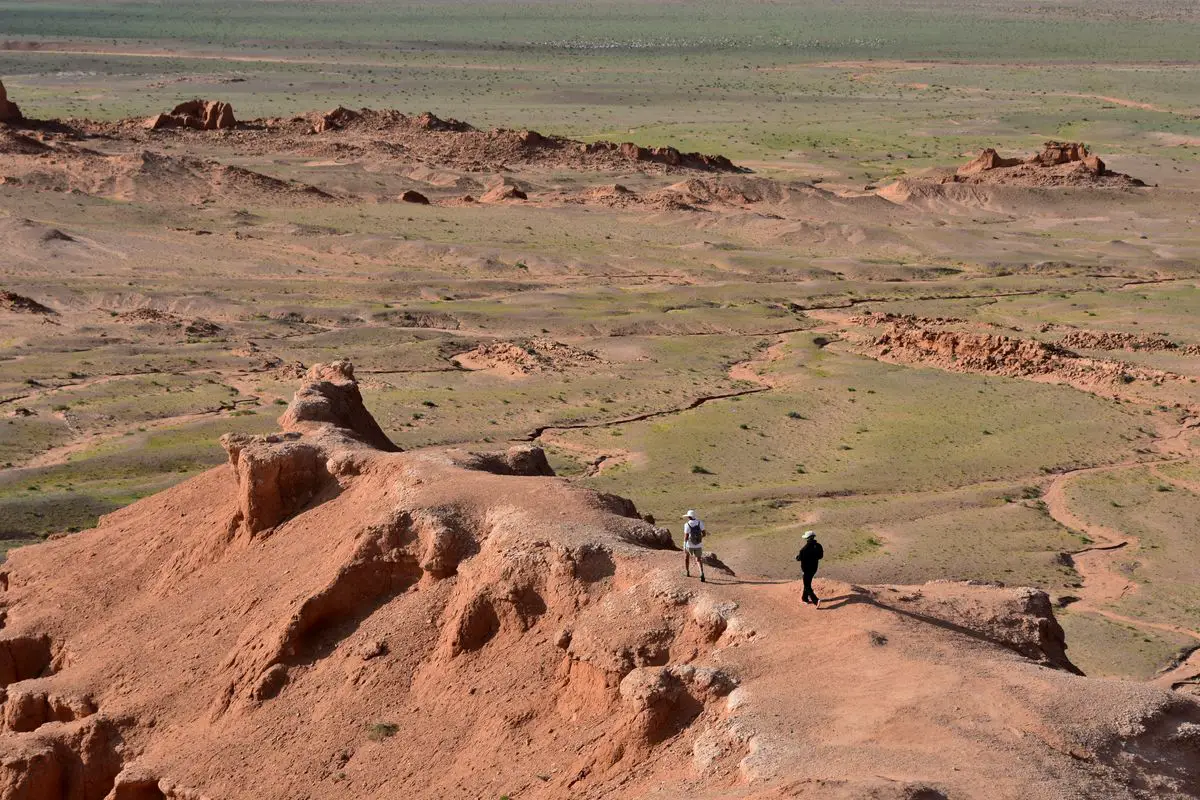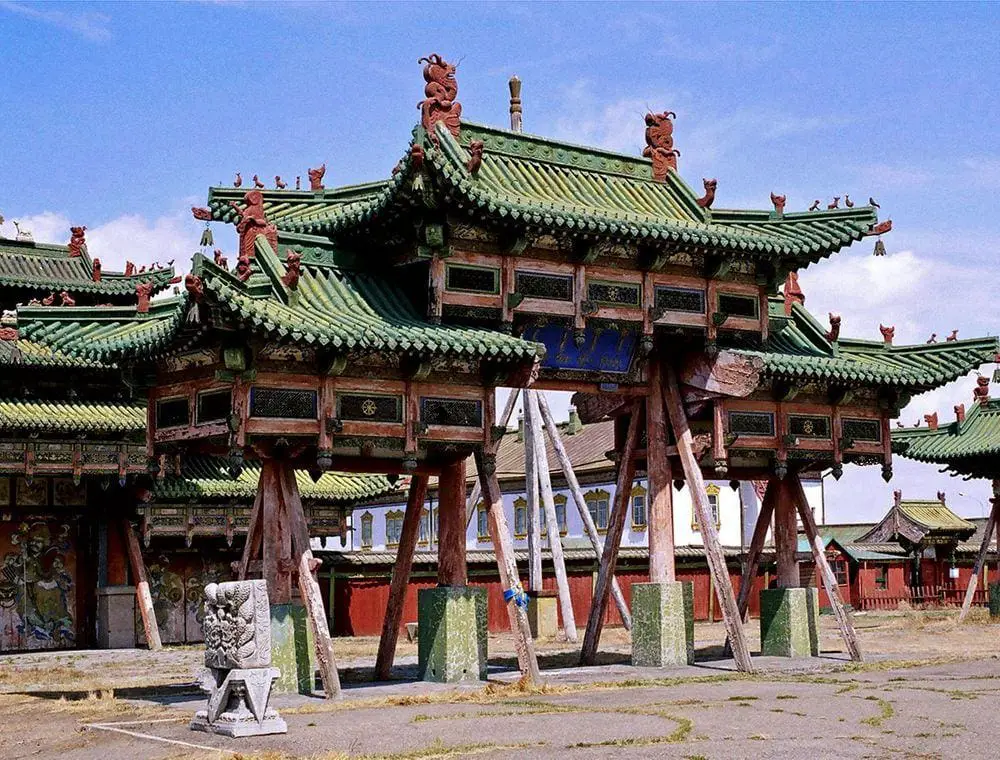Wondermondo 🢖 World 🢖 Wonders of Asia 🢖 Wonders of Mongolia
Territory
Wonders of Mongolia
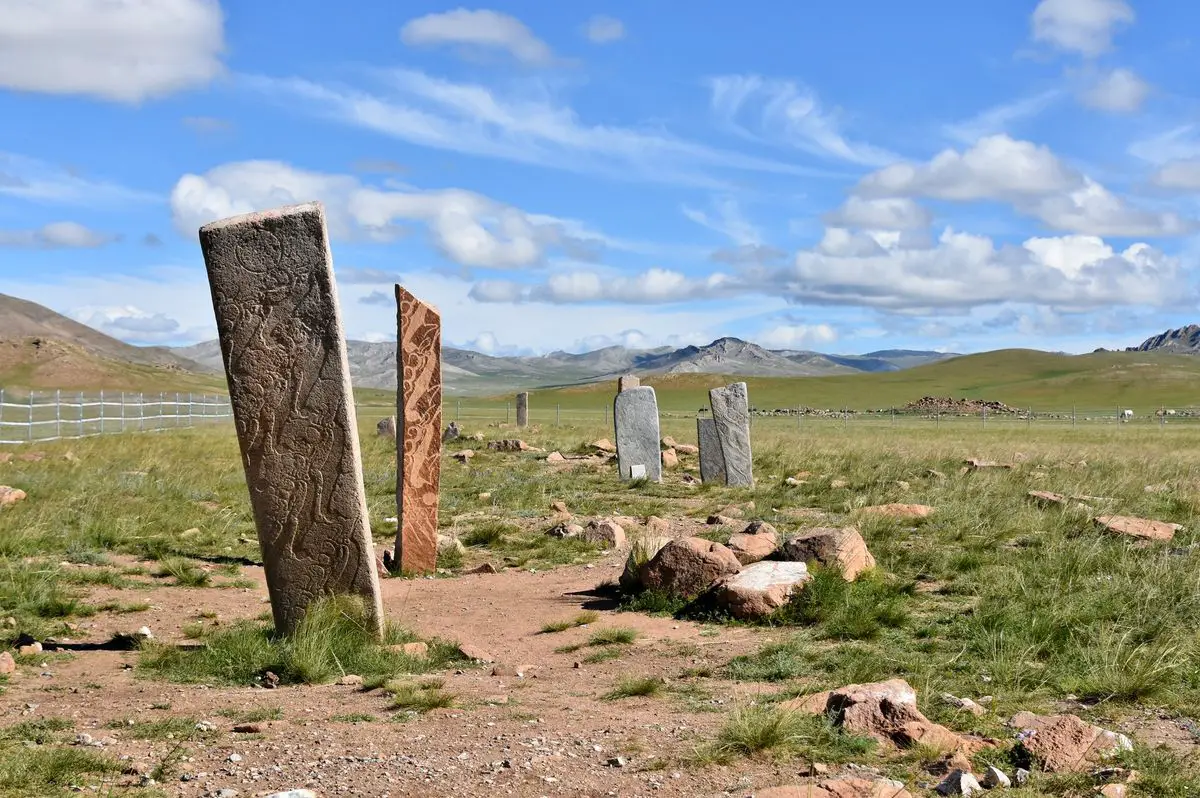
 Highlights
Highlights
This enormous country is sparsely populated – but quite rich with natural and man-made heritage. The most amazing wonders of Mongolia are:
- Fossil finds – the legendary dinosaur graveyards of Mongolia have been like Eldorado to paleontologists. Secluded valleys and canyons near the Gobi desert are packed with fossilized bones of extinct reptiles and amphibians. State of preservation often is surprising – this was the first place in the world where dinosaur eggs were found, world-famous "fighting dinosaurs" (Velociraptor and Protoceratops) were found here in 1971.
- Rock art – thousands of cliffs, rocks, and shelters in Mongolia are adorned with old drawings and etchings, often showing extinct animals – mammoths and rhinos, and often showing amazing skills of prehistoric artists. Unique are deer stones – standing stones adorned with intricate, fantastic designs.
Map with the described wonders
If you see this after your page is loaded completely, leafletJS files are missing.
 Top 25 wonders of Mongolia
Top 25 wonders of Mongolia
Geological wonders
Tabun Khara Obo
Dornogovi
Impressive, very well preserved impact crater that has formed in Proterozoic rocks. Diameter – 1.3 km, visible depth – up to 30 km.
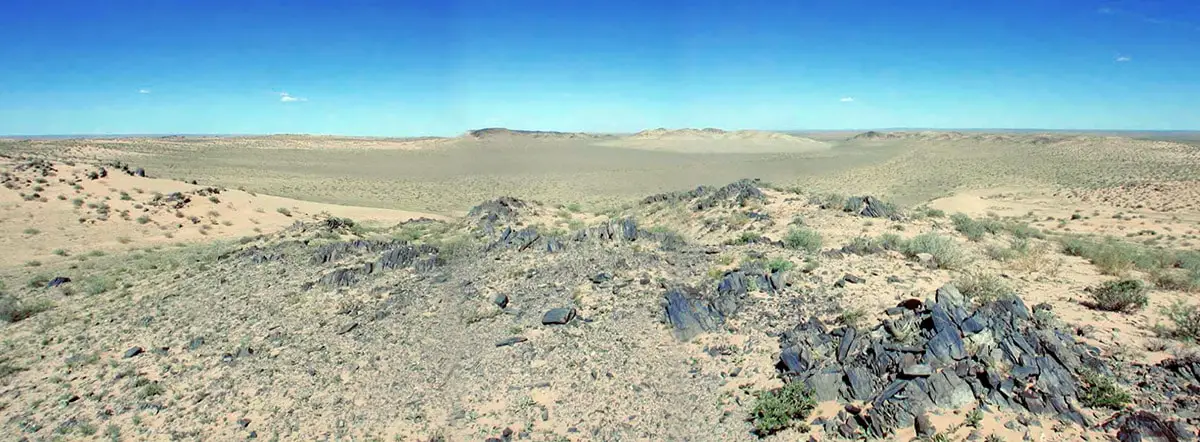
Khongoryn Els singing dunes
Bayankhongor
Impressive system of dunes, several hundred meters tall. Dunes emit eerie, humming sound in the wind or when walking.
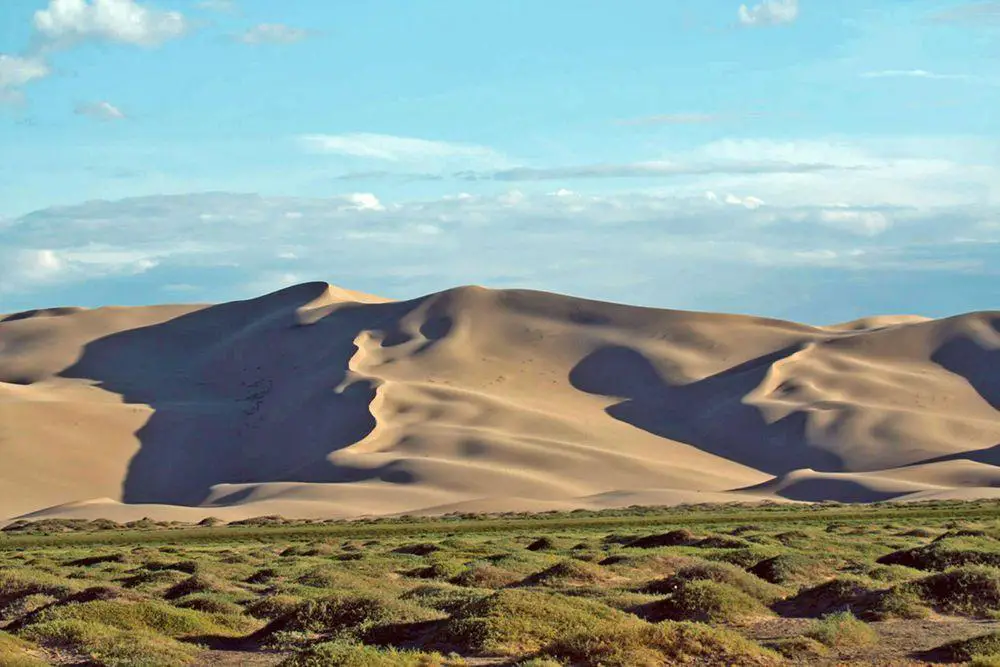
Yolyn Am
Bayankhongor
Impressive, narrow gorge with up to 200 m tall cliffs. Ice field persists in this gorge throughout most of the year, although lately, it disappears at the end of summer.
Taikhar Chuluut
Arkhangai
Granite monolith that is abruptly rising from the ground, 25 m tall. Sacred place.
Melkhii Khad (Turtle Rock)
Töv
An enormous monolith – a rock that resembles a turtle.
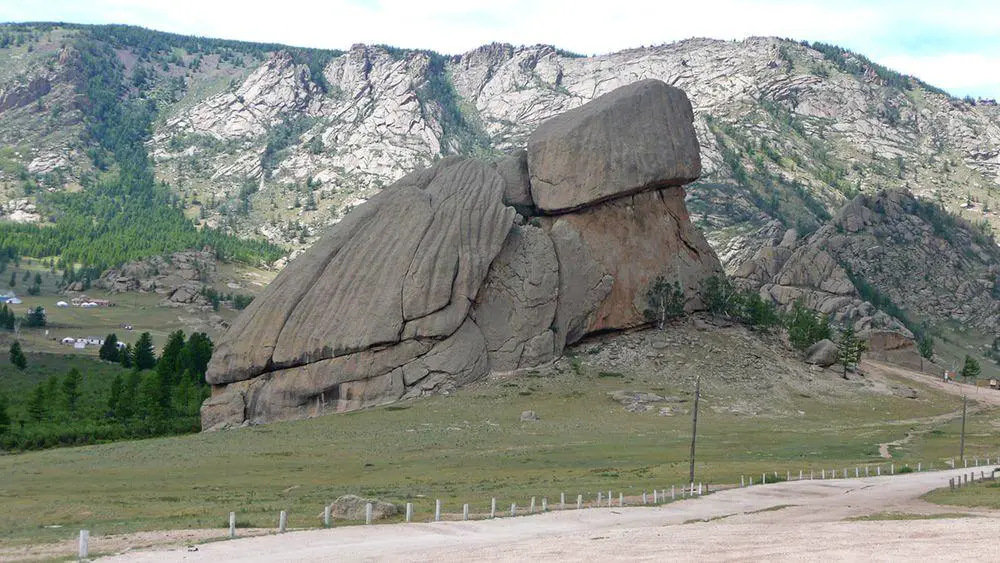
Arsain Falls (Arsain Khurkhree)
Khövsgöl
The tallest waterfall in Mongolia, some 70 m tall.
Biological wonders
Bayanzag (Flaming Cliffs)
Ömnögovi
One of the richest and most interesting fossil finds on Earth. This was the first site where dinosaur eggs were found, here have been found remnants of Velociraptor and other Cretaceous dinosaurs.
Khermen Tsav
Bayankhongor
Gorgeous canyon with amazing, up to 30 m tall cliff formations. Very rich find of Cretaceous dinosaur fossils, dinosaur eggs, and other fossils.
Archaeological wonders
Uushigiin Uver (Moron Deer Stones)
Khentii
One of the most impressive groups of Deer stones and other monuments. Fourteen standing stones with beautifully carved deer on their surfaces. Constructed in 1000 BC (?).
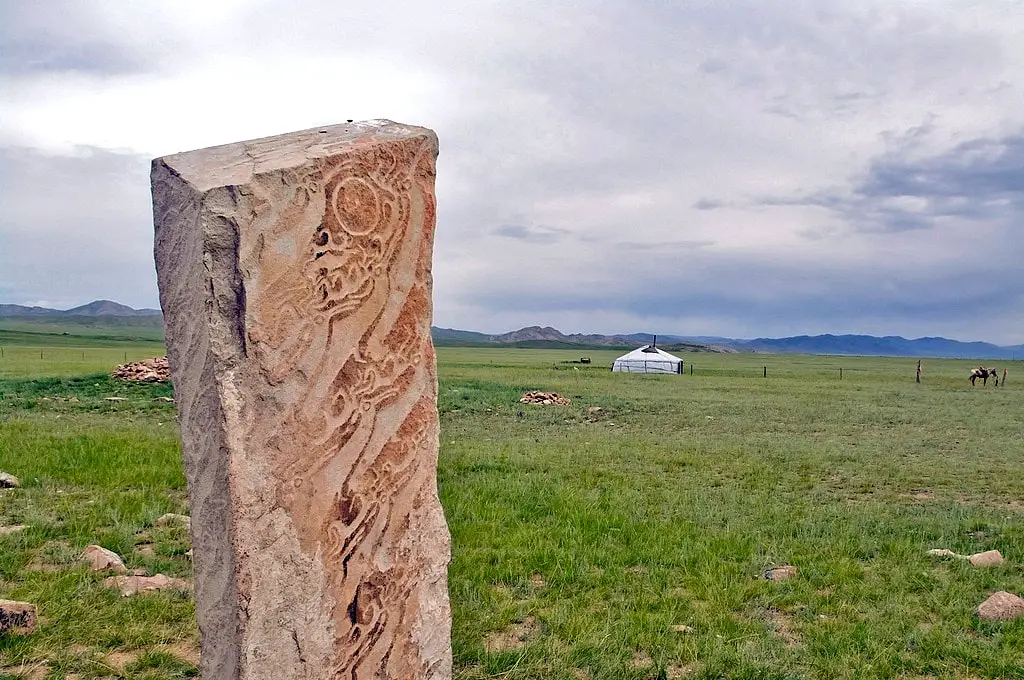
Karakorum ruins (Kharkhorin)
Övörkhangai
Ruins (mostly underground) of the former capital of the Mongol Empire, established by Ghengis Khan around 1220. Even European artisans came here to build wonderful buildings and create artworks, including the legendary Silver Tree and, possibly – Xanadu palace. Destroyed in 1388. Now only two large sculptures of turtles – former adornment of city gates – remain.
Burkhan Khaldun
Khentii
The most sacred mountain in Mongolia, the first mountain declared to be sacred by Genghis Khan. It is possible that he was born nearby and could be buried here as well.
Orkhon inscriptions (Steles of Tonyukuk, Bayn Tsokto)
Ulaanbaatar
Monuments – two standing steles that were erected in 722 AD to commemorate the deeds of Tonyukuk – a great statesman of the past. Steles are covered with Orkhon-Turkic script and tell the history of Turks, are similar to epics.
Ulaan Tolgoi
Khövsgöl
Site with five deer stones. The tallest one is 3.8 m tall.
Upper Tsagaan Gol rock art
Bayan-Ölgii
Some 5000 groups of prehistoric drawings, each depicting a certain scheme. Many drawings seem to be oriented toward the sacred mountain – Shiviit Khairkhan.
Architecture wonders
Winter Palace of the Bogd Khan
Ulaanbaatar
The only remaining palace of the emperor of Mongolia, Bogd Khan. This complex of buildings includes six temples, and natural and art collections of Bogd Khan.
Genghis Khan Statue
Ulaanbaatar
The largest equestrian statue in the world, 40 m tall. Depicts Genghis Khan on horseback. Statue stands on the building of the visitor center. Constructed in 2008. Park and architectonic complex is arranged around the statue.
Gandantegchinlen monastery
Ulaanbaatar
The principal center of Buddhist learning in Mongolia, the only monastery that persisted during the Socialist times. Founded in 1727. Contains a 26.5 m tall statue of Migjid Janraisig, covered with gold and 2 286 gemstones.
Erdene Zuu monastery
Övörkhangai
The oldest existing Buddhist monastery in Mongolia, founded in 1585. It was almost completely destroyed by the Communists in 1939.
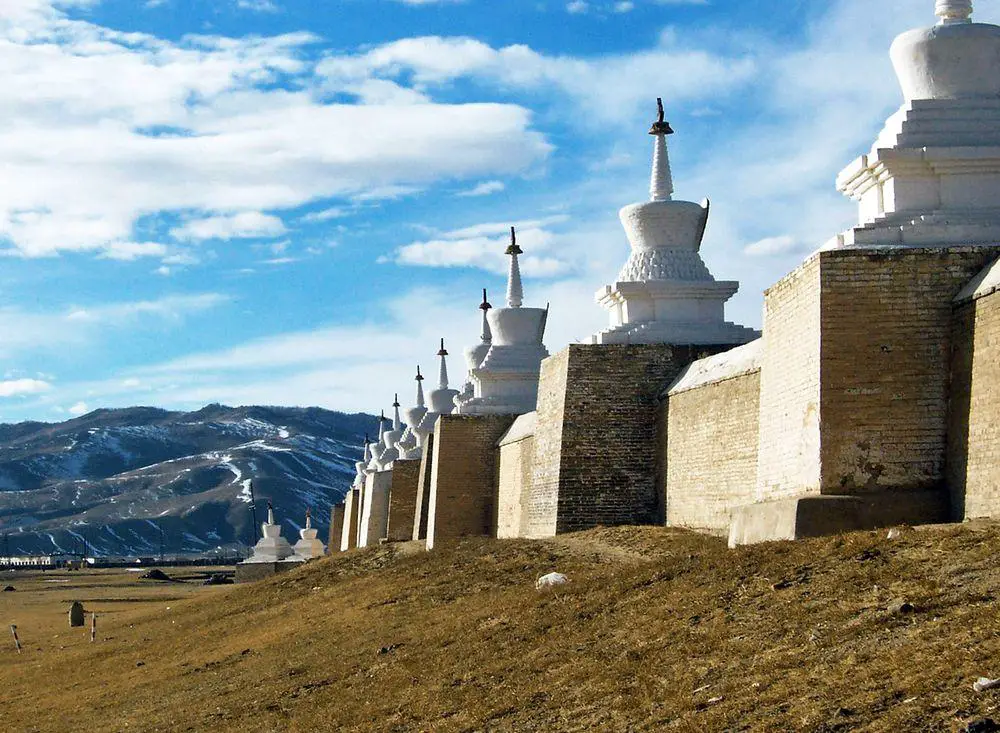
Ikh Khorig
Khentii
Somewhat mysterious, approximately 240 km² large area that is carefully guarded for many centuries since the death of Ghengis Khan in 1227. It is possible that here is located the tomb of Genghis Khan. This beautiful woodland was guarded by Darkhad, who killed anyone entering it. In Socialist times it was heavily guarded by armed forces, now opened only for scientific research. Many Mongols consider that disturbance to this place can cause a catastrophe to mankind.
Burkhan Khaldun
Khentii
The most sacred mountain in Mongolia, the first mountain declared to be sacred by Genghis Khan. It is possible that he was born nearby and could be buried here as well.
Shankh monastery
Övörkhangai
One of the oldest monasteries in Mongolia, established by Zanabazar in 1647. Destroyed in 1937, now reconstructed.
Amarbayasgalant monastery
Selenge
One of the most interesting monasteries in Mongolia, built in 1727 – 1736. Constructed in a green site rich with Mongolian cherries and diverse archaeological landmarks. Now here remain 28 temples on a 207 x 175 m large platform. Temples have interesting engineering solutions.
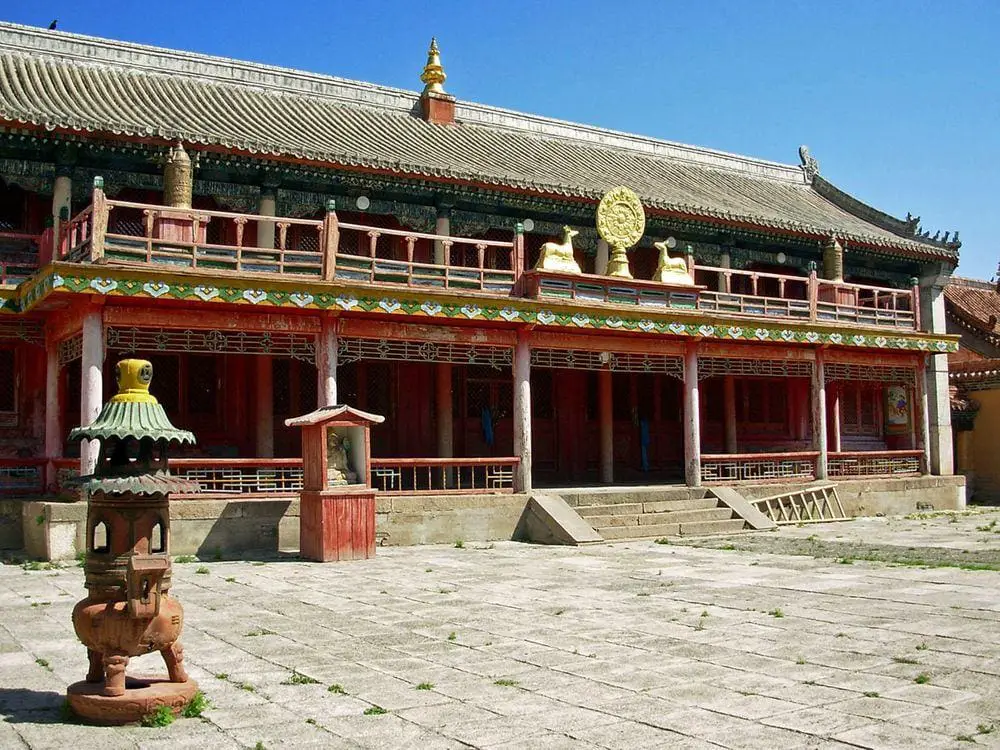
Tuvkhun monastery
Övörkhangai
An important monastery, established by Zanabazar in 1654 in a spectacular mountaintop location. Heavily damaged by Communists in the 1930ies but revived. Site of legends.
Kharkhorin Rock
Övörkhangai
60 cm long statue of a penis, located on a stone platform. Possibly linked to the nearby Erdene Zuu monastery in order to remind them about the importance of celibate.
Öglögchiin Kherem
Khentii
3.2 km long and approximately 3 m tall stone wall, built in the time period from the 8th to 10th centuries. Near this wall are more than 60 old graves – possible royal graveyard.
Natural History Museum (Mongolia)
Ulaanbaatar
This museum contains unique collections of dinosaur fossils (including “fighting dinosaurs”), meteorites, and other unique finds in Mongolia.
 Recommended books
Recommended books
Mongolia: Nomad Empire of the Eternal Blue Sky
Mongolia is a land of constant surprises. Renowned for its classic rolling steppe land -from where, in times past, nomadic Mongol clans and confederations swept out to conquer much of the known world.
Mongolia – Culture Smart!: The Essential Guide to Customs & Culture
Mongolia is landlocked between its neighbors China and Russia in the heart of Asia. For centuries after the disintegration of Genghis Khan’s empire, it was ruled by one or the other, but in 1990 the Mongols embraced democracy. Now, after two centuries of Manchu stagnation and seventy years of Soviet communism, they are rebuilding their national heritage. Rarely in the news but making progress toward a market economy, this resource-rich but the infrastructure-poor country is a land of pioneers, and its greatest asset is the Mongol people, who are friendly, cooperative, ambitious, and well educated.

